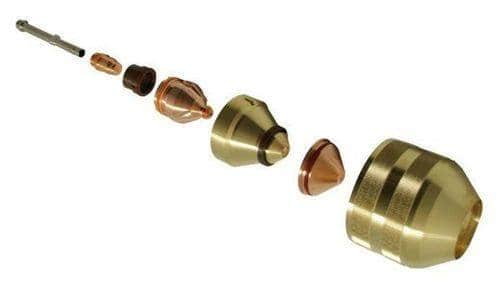Plasma cutting has become a vital technology in the manufacturing and fabrication industries, offering unparalleled precision and efficiency. However, as with any industrial operation, safety should always be the top priority. For operators and technicians working with Hypertherm plasma systems, understanding and implementing safety practices is essential to minimize risks and ensure a safe working environment. This blog outlines key safety tips for using Hypertherm plasma systems effectively and responsibly.
1. Proper Training and Certification
Before operating any Hypertherm plasma cutter, it is crucial that all personnel undergo thorough training. This training should include:
- Understanding the Equipment: Operators must be familiar with the specific model they will be using, including its features and capabilities.
- Safety Procedures: Comprehensive training should cover safety protocols, emergency procedures, and hazard recognition.
- Certification: Obtain certification from recognized training programs, ensuring all operators are qualified to handle plasma cutting equipment.
2. Personal Protective Equipment (PPE)
Wearing appropriate personal protective equipment (PPE) is non-negotiable when operating plasma cutters. Essential PPE includes:
- Safety Goggles: Protects eyes from harmful UV radiation and sparks.
- Face Shield: Offers additional facial protection from flying debris.
- Flame-Resistant Clothing: Reduces the risk of burns from sparks and molten metal.
- Gloves: Heat-resistant gloves protect hands from burns and sharp edges.
- Steel-Toed Boots: Provides foot protection against heavy materials and dropped equipment.
3. Maintain a Clean Workspace
A cluttered workspace can lead to accidents and injuries. To maintain safety, operators should:
- Keep the Area Clean: Regularly clean the work area to eliminate tripping hazards and ensure a safe working environment.
- Organize Tools and Materials: Store tools and materials properly to prevent accidents caused by misplaced items.
- Implement Fire Safety Measures: Ensure that flammable materials are kept at a safe distance from the cutting area and that fire extinguishers are accessible.
4. Ensure Proper Ventilation
Plasma cutting generates fumes and gases that can be hazardous to health. Ensure adequate ventilation by:
- Using Exhaust Fans: Install exhaust systems to remove harmful fumes from the workspace.
- Opening Windows and Doors: When possible, keep windows and doors open to improve air circulation.
- Wearing Respirators: In poorly ventilated areas, operators should wear respiratory protection to safeguard against inhaling toxic fumes.
5. Check Equipment Regularly
Routine maintenance and inspection of Hypertherm plasma systems are vital for safe operation. Operators should:
- Inspect Cables and Connections: Look for signs of wear, fraying, or damage to cables, and replace any faulty components immediately.
- Test Safety Features: Ensure that safety switches, emergency stops, and other safety features are functioning correctly.
- Follow Maintenance Schedules: Adhere to manufacturer-recommended maintenance schedules to keep the equipment in optimal condition.
6. Follow Operating Guidelines
Each Hypertherm plasma system comes with specific operating guidelines that should always be followed. Key points include:
- Consult the User Manual: Review the user manual for operational instructions and safety precautions specific to the model being used.
- Adjust Settings Appropriately: Ensure that the cutting settings (amperage, pressure, and speed) are adjusted according to the material being cut to avoid accidents.
- Be Mindful of the Environment: Consider the surrounding environment and ensure that there are no potential hazards nearby when setting up the plasma cutter.
7. Practice Situational Awareness
Maintaining situational awareness is crucial when operating any heavy machinery. Operators should:
- Stay Focused: Avoid distractions while cutting and remain vigilant about surroundings.
- Communicate Clearly: Use clear signals or communication devices to maintain contact with other team members.
- Anticipate Risks: Be aware of potential hazards, such as other workers, equipment, and materials, to prevent accidents.
8. Know Emergency Procedures
In the event of an emergency, operators must be prepared to act quickly and effectively. Important steps include:
- Know the Location of Emergency Equipment: Familiarize yourself with the locations of fire extinguishers, first aid kits, and emergency exits.
- Understand Emergency Shutdown Procedures: Know how to quickly and safely shut down the plasma cutter in case of an emergency.
- Report Incidents Promptly: In case of any accidents or injuries, report them immediately to the supervisor and document the incident.
Safety should always be at the forefront of plasma cutting operations. By adhering to these safety tips, operators and technicians can create a safer working environment while maximizing the efficiency and effectiveness of Hypertherm plasma systems. Remember, proper training, the use of PPE, and regular equipment maintenance are essential in preventing accidents and ensuring a long, productive life for both operators and the equipment they use. Embrace a culture of safety, and you’ll ensure that plasma cutting continues to be a powerful and safe tool in the fabrication industry.

